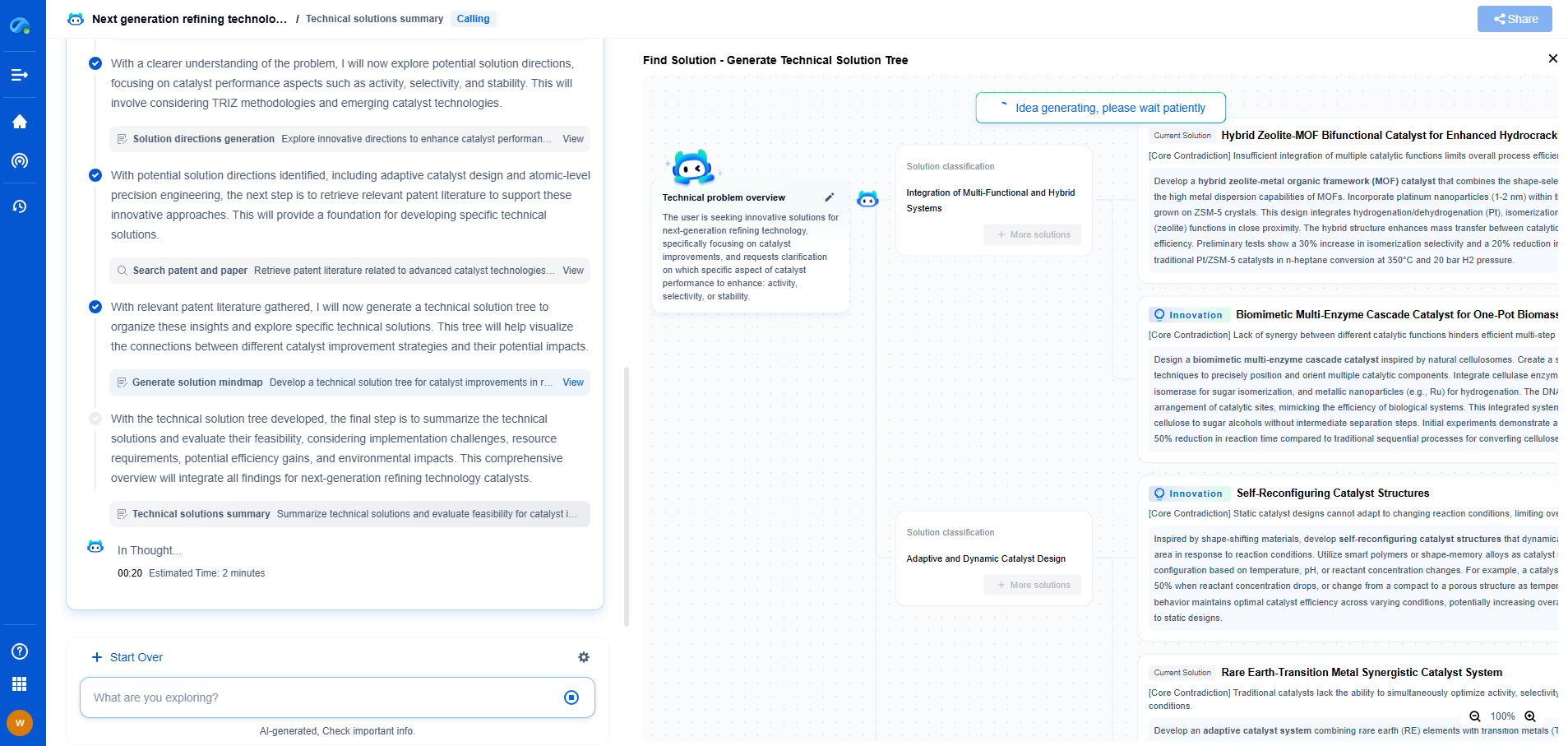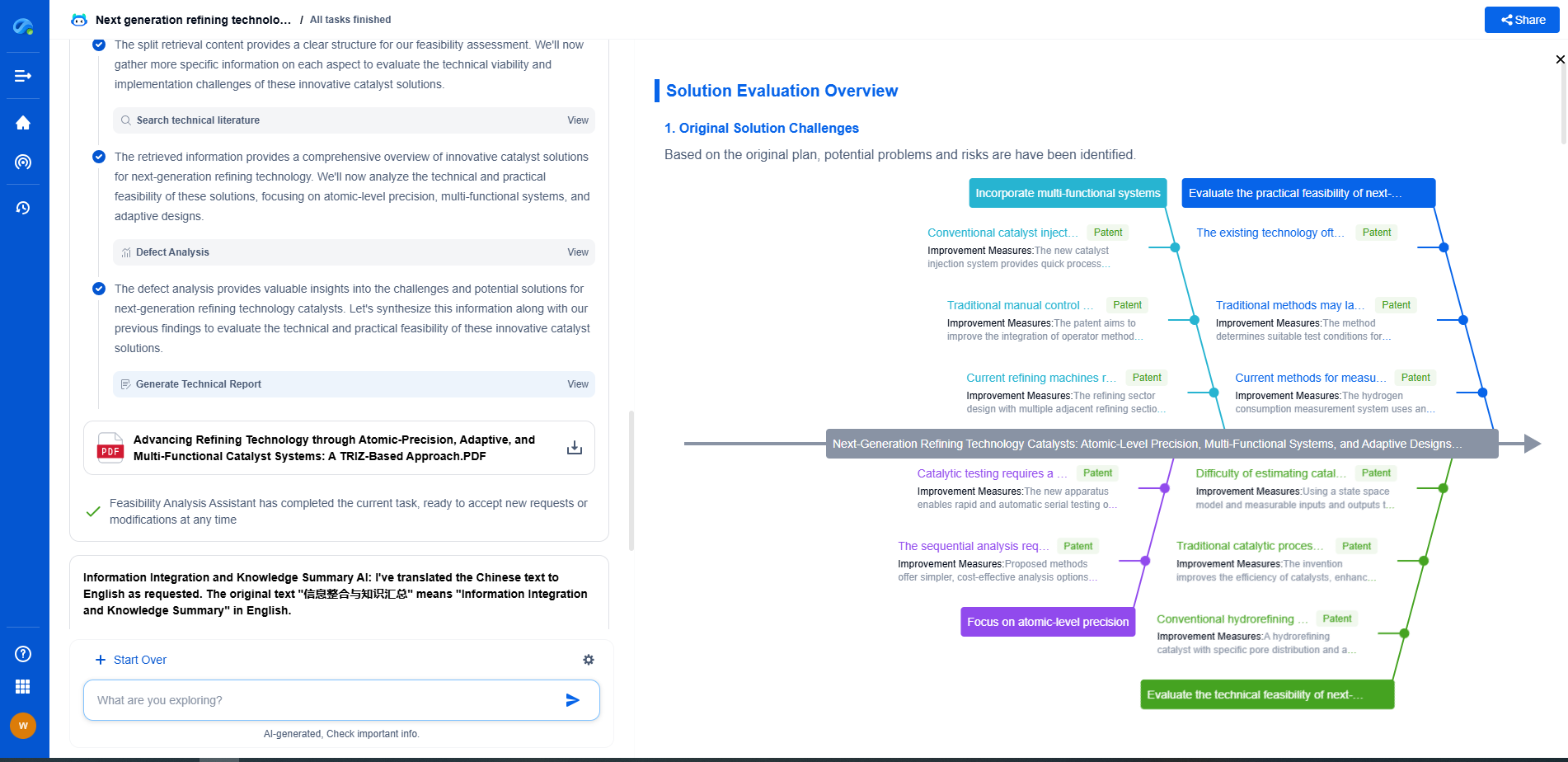Building a Future-Proof System Architecture with Open Standards
JUN 26, 2025 |
In today's rapidly evolving technological landscape, building a future-proof system architecture is crucial for organizations aiming to stay competitive and agile. A future-proof architecture is one that can adapt to new requirements and technologies without necessitating a complete overhaul. At the heart of this adaptability lies the adoption of open standards. Open standards are publicly available and universally accepted guidelines that ensure compatibility and interoperability between different systems and software solutions.
One of the primary advantages of open standards is that they foster an environment of innovation and collaboration. By adhering to these standards, organizations can leverage a wide array of tools and technologies available in the market. This not only reduces the dependency on a single vendor but also minimizes the risk of vendor lock-in, which can stifle innovation and lead to increased costs over time.
**Enhancing Interoperability and Flexibility**
Building a system architecture based on open standards enhances interoperability between various components of the IT ecosystem. With open standards, different systems and applications can communicate seamlessly, regardless of the underlying technology stack. This flexibility is particularly important in a multi-cloud environment, where organizations often utilize services from multiple vendors to meet their diverse needs.
The flexibility offered by open standards allows businesses to choose the best solutions for their specific requirements, integrating new technologies as they emerge without significant disruptions. This adaptability ensures that the system architecture remains relevant and efficient, even as technology continues to evolve at a rapid pace.
**Cost-Effectiveness and Long-Term Sustainability**
Adopting open standards is not only strategically beneficial but also cost-effective. Open standards often lead to reduced implementation and maintenance costs, as they enable the use of widely adopted technologies and solutions. Organizations can avoid the high costs associated with proprietary systems, such as licensing fees and specialized support, while benefitting from a broader community of developers and support networks.
Moreover, open standards contribute to long-term sustainability by ensuring that systems remain compatible with future innovations. This future-proofing reduces the likelihood of costly and time-consuming system overhauls, as components can be updated incrementally to incorporate new functionalities and technologies.
**Driving Innovation Through Collaboration**
Open standards create a fertile ground for collaboration and innovation. They allow organizations to work together, sharing knowledge and resources to develop new solutions and address common challenges. This collaborative approach not only accelerates the pace of technological advancement but also leads to more robust and resilient systems.
Communities and consortiums formed around open standards often contribute to continuous improvement, ensuring that standards evolve to meet emerging needs and technologies. Organizations that participate in these communities can influence the development of standards, aligning them more closely with their business objectives.
**Ensuring Security and Compliance**
Security is a paramount concern in system architecture, and open standards play a vital role in enhancing security measures. Open standards are subject to extensive scrutiny by a global community of experts, ensuring that vulnerabilities are identified and addressed promptly. This collective vigilance often results in more secure systems compared to those relying on proprietary standards with limited oversight.
Additionally, open standards facilitate compliance with industry regulations and legal requirements. As standards are developed with broad industry consensus, they often align with regulatory frameworks, simplifying the process of achieving compliance and reducing associated risks.
**Conclusion: Embracing Open Standards for a Resilient Future**
In conclusion, building a future-proof system architecture with open standards is a strategic imperative for organizations seeking to thrive in a rapidly changing technological environment. Open standards offer numerous benefits, including enhanced interoperability, flexibility, cost-effectiveness, and security. By embracing open standards, organizations can foster innovation, collaborate more effectively, and ensure long-term sustainability and resilience in their system architectures. As technology continues to evolve, open standards will remain a cornerstone of successful and adaptable IT strategies.
Stay Ahead in Power Systems Innovation
From intelligent microgrids and energy storage integration to dynamic load balancing and DC-DC converter optimization, the power supply systems domain is rapidly evolving to meet the demands of electrification, decarbonization, and energy resilience.
In such a high-stakes environment, how can your R&D and patent strategy keep up?
Patsnap Eureka, our intelligent AI assistant built for R&D professionals in high-tech sectors, empowers you with real-time expert-level analysis, technology roadmap exploration, and strategic mapping of core patents—all within a seamless, user-friendly interface.
👉 Experience how Patsnap Eureka can supercharge your workflow in power systems R&D and IP analysis. Request a live demo or start your trial today.
- R&D
- Intellectual Property
- Life Sciences
- Materials
- Tech Scout
- Unparalleled Data Quality
- Higher Quality Content
- 60% Fewer Hallucinations
Browse by: Latest US Patents, China's latest patents, Technical Efficacy Thesaurus, Application Domain, Technology Topic, Popular Technical Reports.
© 2025 PatSnap. All rights reserved.Legal|Privacy policy|Modern Slavery Act Transparency Statement|Sitemap|About US| Contact US: help@patsnap.com

